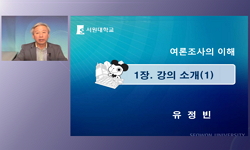Background: Medically unexplained symptoms (MUSs) are common in primary care. Atpresent, there are no proven, comprehensive treatments available in primary care forpatients with MUSs. However, MUS has parallels with “subhealth” or Mibyeong from tr...
http://chineseinput.net/에서 pinyin(병음)방식으로 중국어를 변환할 수 있습니다.
변환된 중국어를 복사하여 사용하시면 됩니다.
- 中文 을 입력하시려면 zhongwen을 입력하시고 space를누르시면됩니다.
- 北京 을 입력하시려면 beijing을 입력하시고 space를 누르시면 됩니다.
Recognition of and interventions for Mibyeong (subhealth) in South Korea: a national web-based survey of Korean medicine practitioners
한글로보기https://www.riss.kr/link?id=A104886019
- 저자
- 발행기관
- 학술지명
- 권호사항
-
발행연도
2014
-
작성언어
English
- 주제어
-
자료형태
학술저널
-
수록면
60-66(7쪽)
-
KCI 피인용횟수
7
- DOI식별코드
- 제공처
-
0
상세조회 -
0
다운로드
부가정보
다국어 초록 (Multilingual Abstract)
Background: Medically unexplained symptoms (MUSs) are common in primary care. Atpresent, there are no proven, comprehensive treatments available in primary care forpatients with MUSs. However, MUS has parallels with “subhealth” or Mibyeong from tradi-tional East-Asian medicine, and thus, Mibyeong interventions could be effective in treatingMUS. Unfortunately, studies on Mibyeong and its intervention methods are relatively rare.Methods: We administered a web-based survey to 17,279 Korean medicine (KM) practitionersregistered with the Association of Korean Medicine. The response rate was 4.9% (n = 849).Based on the responses received, we assessed how much they agreed with concepts relatedto Mibyeong on a 7-point scale from “do not agree” to “strongly agree.” Respondents werealso asked to indicate how frequently they encountered various subtypes and patterns ofMibyeong, and how frequently they use listed intervention methods.Results: Data from 818 respondents were analyzed after excluding those with no clinicalexperience. On average, respondents were male general practitioners aged between 30 yearsand 49 years, working or living in metropolitan areas such as Seoul, Incheon, and Gyeonggi-do. Responses did not differ by demographics. Respondents generally thought that Mibyeongreferred to subjective or borderline findings without certain disease, and that Mibyeong hasvarious subtypes and patterns. Subtypes included fatigue, pain, and digestion problems; pat-terns were either deficiencies (e.g., qi, blood, and yin deficiency) or stagnations (e.g., liver qidepression and qi stagnation). Decoction was the most frequently used type of interventionfor Mibyeong of all items listed, followed by acupuncture and moxibustion. Patient educa-tion was also recommended, suggesting healthy eating, promoting healthy environment,and exercise.Conclusion: We were able to provide preliminary results on KM practitioners’ recognition ofand interventions for Mibyeong, but further research is needed to develop a detailed defi-nition of Mibyeong and its myriad subtypes and patterns, and evaluations of the efficacy ofMibyeong interventions.
참고문헌 (Reference)
1 이상재, "‘未病’ 연구의 경향에 관한 고찰" 대한한의학원전학회 23 (23): 23-34, 2010
2 Chakera AJ, "Treatment for primary hypothyroidism : current approaches and future possibilities" 6 : 1-11, 2012
3 Smith RC, "Treating patients with medically unexplained symptoms in primary care" 18 : 478-489, 2003
4 The Korea Institute for Health and Social Affairs, "The use and expenditure of the Korean medicine service and herbal drugs" Ministry of Health and Welfare 2011
5 Veith I., "The Yellow Emperor’s classic of internal medicine" Berkeley: University of California Press; 2002
6 Yasmeen S, "Screening mammography beliefs and recommendations : a web-based survey of primary care physicians" 12 : 32-, 2012
7 Hilderink PH, "Prevalence of somatoform disorders and medically unexplained symptoms in old age populations in comparison with younger age groups : a systematic review" 12 : 151-156, 2012
8 Nacul LC, "Prevalence of myalgic encephalomyelitis/chronic fatigue syndrome(ME/CFS)in three regions of England : a repeated cross-sectional study in primary care" 9 : 91-, 2011
9 Katon WJ, "Medically unexplained symptoms in primary care" 59 : 15-21, 1998
10 Henningsen P, "Medically unexplained physical symptoms, anxiety, and depression: a meta-analytic review" 65 : 528-533, 2003
1 이상재, "‘未病’ 연구의 경향에 관한 고찰" 대한한의학원전학회 23 (23): 23-34, 2010
2 Chakera AJ, "Treatment for primary hypothyroidism : current approaches and future possibilities" 6 : 1-11, 2012
3 Smith RC, "Treating patients with medically unexplained symptoms in primary care" 18 : 478-489, 2003
4 The Korea Institute for Health and Social Affairs, "The use and expenditure of the Korean medicine service and herbal drugs" Ministry of Health and Welfare 2011
5 Veith I., "The Yellow Emperor’s classic of internal medicine" Berkeley: University of California Press; 2002
6 Yasmeen S, "Screening mammography beliefs and recommendations : a web-based survey of primary care physicians" 12 : 32-, 2012
7 Hilderink PH, "Prevalence of somatoform disorders and medically unexplained symptoms in old age populations in comparison with younger age groups : a systematic review" 12 : 151-156, 2012
8 Nacul LC, "Prevalence of myalgic encephalomyelitis/chronic fatigue syndrome(ME/CFS)in three regions of England : a repeated cross-sectional study in primary care" 9 : 91-, 2011
9 Katon WJ, "Medically unexplained symptoms in primary care" 59 : 15-21, 1998
10 Henningsen P, "Medically unexplained physical symptoms, anxiety, and depression: a meta-analytic review" 65 : 528-533, 2003
11 Cho K, "Life guidelines of the Sasang constitutional medicine in the management of ‘Mibyou’ in Korea" 4 (4): S216-S219, 2004
12 Kishida Y, "Juzentaihoto (TJ-48), a traditional Japanese herbal medicine, influences hemoglobin recovery during preoperative autologous blood donation, after hip surgery" 47 : 716-721, 2009
13 Kim HG, "Indirect moxibustion (CV4and CV8) ameliorates chronic fatigue: a randomized, double-blind, controlled study" 19 : 134-140, 2013
14 Reid S, "Frequent attenders with medically unexplained symptoms : service use and costs in secondary care" 180 : 248-253, 2002
15 Koch H, "Demographic characteristics and quality of life of patients with unexplained complaints : a descriptive study in general practice" 16 : 1483-1489, 2007
16 White PM, "Colorectal cancer screening of high-risk populations : a national survey of physicians" 5 : 64-, 2012
17 Nezu AM, "Cognitive-behavior therapy for medically unexplained symptoms : a critical review of the treatment literature" 32 : 537-583, 2001
18 Jeong JS, "Bojungikki-tang for cancer-related fatigue : a pilot randomized clinical trial" 9 : 331-338, 2010
19 Wang T, "A systematic review of acupuncture and moxibustion treatment for chronic fatigue syndrome in China" 36 : 1-24, 2008
동일학술지(권/호) 다른 논문
-
- 한국한의학연구원
- Nonthaneth Nalinratana
- 2014
-
- 한국한의학연구원
- Harshal Pawar
- 2014
-
Functional abdominal pain syndrome treated with Korean medication
- 한국한의학연구원
- 손창규
- 2014
-
- 한국한의학연구원
- 박태용
- 2014
분석정보
인용정보 인용지수 설명보기
학술지 이력
| 연월일 | 이력구분 | 이력상세 | 등재구분 |
|---|---|---|---|
| 2023 | 평가예정 | 해외DB학술지평가 신청대상 (해외등재 학술지 평가) | |
| 2020-01-01 | 평가 | 등재학술지 유지 (해외등재 학술지 평가) |  |
| 2017-01-01 | 평가 | 등재학술지 선정 (계속평가) |  |
| 2015-07-28 | 학술지명변경 | 한글명 : INTEGRATIVE MEDICINE RESEARCH -> Integrative Medicine Research외국어명 : INTEGRATIVE MEDICINE RESEARCH -> Integrative Medicine Research |  |
| 2015-01-01 | 평가 | 등재후보학술지 선정 (신규평가) |  |
학술지 인용정보
| 기준연도 | WOS-KCI 통합IF(2년) | KCIF(2년) | KCIF(3년) |
|---|---|---|---|
| 2016 | 0.35 | 0.35 | 0.31 |
| KCIF(4년) | KCIF(5년) | 중심성지수(3년) | 즉시성지수 |
| 0.33 | 0 | 0.432 | 0.17 |




 KCI
KCI




